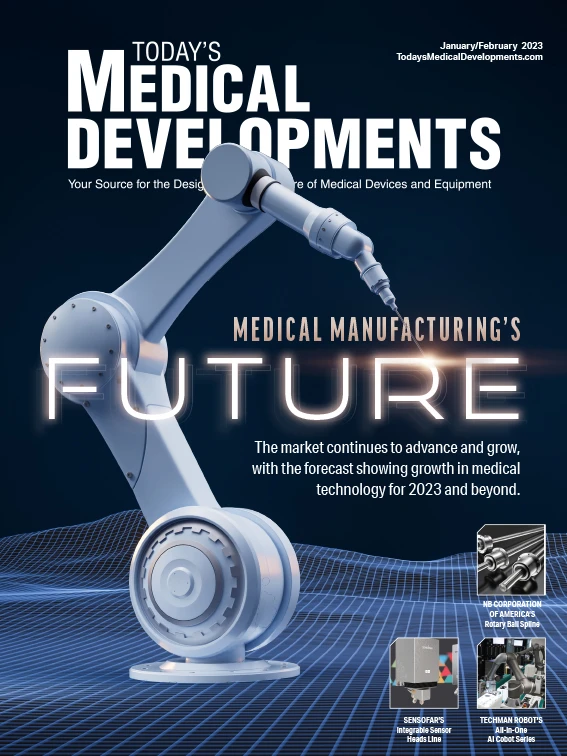
emodic@gie.net
As we start a new year, economists and industry surveys continue to note the concerns that have traveled from 2022 into 2023, yet medical manufacturing remains a consistently in-demand sector. Baby Boomers age, younger patients have joint replacements earlier in life, and chronic disease prevalence is growing – learn more in the cover story starting on page 20.
Additionally, the latest Oxford Economics U.S. research briefing shows “supply-chain stress continues to recede, boding well for inflation and lending some upside risk to our near-term growth outlook. Odds are it will take time for the positive impact to work through the economy, but the effects of the pandemic and other recent shocks on supply-chains are clearly fading.”
Adding to this, Oxford Economics’ proprietary supply-chain stress indicator registered its second consecutive year over year (y/y) decline in December, ending the year 13% below where it stood at the end of 2021. And, for a second straight month, all components of its tracker improved. Transportation led the way, with trade pressures dropping, while the activity and labor components improved more modestly.
So, that’s the good news as we start the new year and look down the road.
However, there’s some not so good news, which is why it’s important to be prepared for what’s forecast and that begins with a plan for staying competitive.
In early January 2023, The National Association of Manufacturers released the results of their fourth quarter Manufacturers’ Outlook Survey and more than 62% of manufacturing leaders believed the U.S. economy would slip into a recession in 2023. However, even if this happens, the manufacturers surveyed have plans to stay competitive by doing the following:
- 65.3% plan capital spending on new equipment and technological investments
- 64.1% plan for upskilling and training of existing workforce
- 55.1% plan on hiring new employees
- 52.1% will invest in research and development
- 63.2% see solid demand for their company’s products
So, what’s the uncertainty?
In Oxford Economics’ January 20, 2023, Weekly Economic Briefing | U.S., the authors note much of the recent economic data is moving in the right direction for the Fed with inflation pressures easing and activity ending 2022 on a soft note. However, inflation remains too high, setting the stage for a mild recession. Meanwhile, the outlook for wage pressures to ease is less clear, and until the Fed has confidence wage growth is headed back toward 3.5%, the analysts will continue to raise rates with an anticipated 25bps rate hike on February 1, 2023 – a smaller hike than previously expected.
The key for 2023 is to hold steady and stay ahead of your competitors. What are your company’s plans to enjoy the good, avoid the not so good, and navigate the uncertainty?

Explore the January February 2023 Issue
Check out more from this issue and find your next story to read.
Latest from Today's Medical Developments
- Arcline to sell Medical Manufacturing Technologies to Perimeter Solutions
- Decline in German machine tool orders bottoming out
- Analysis, trends, and forecasts for the future of additive manufacturing
- BlueForge Alliance Webinar Series Part III: Integrate Nationally, Catalyze Locally
- Robot orders accelerate in Q3
- Pro Shrink TubeChiller makes shrink-fit tool holding safer, easier
- Revolutionizing biocompatibility: The role of amnion in next-generation medical devices
- #56 Lunch + Learn Podcast with Techman Robot + AMET Inc.





